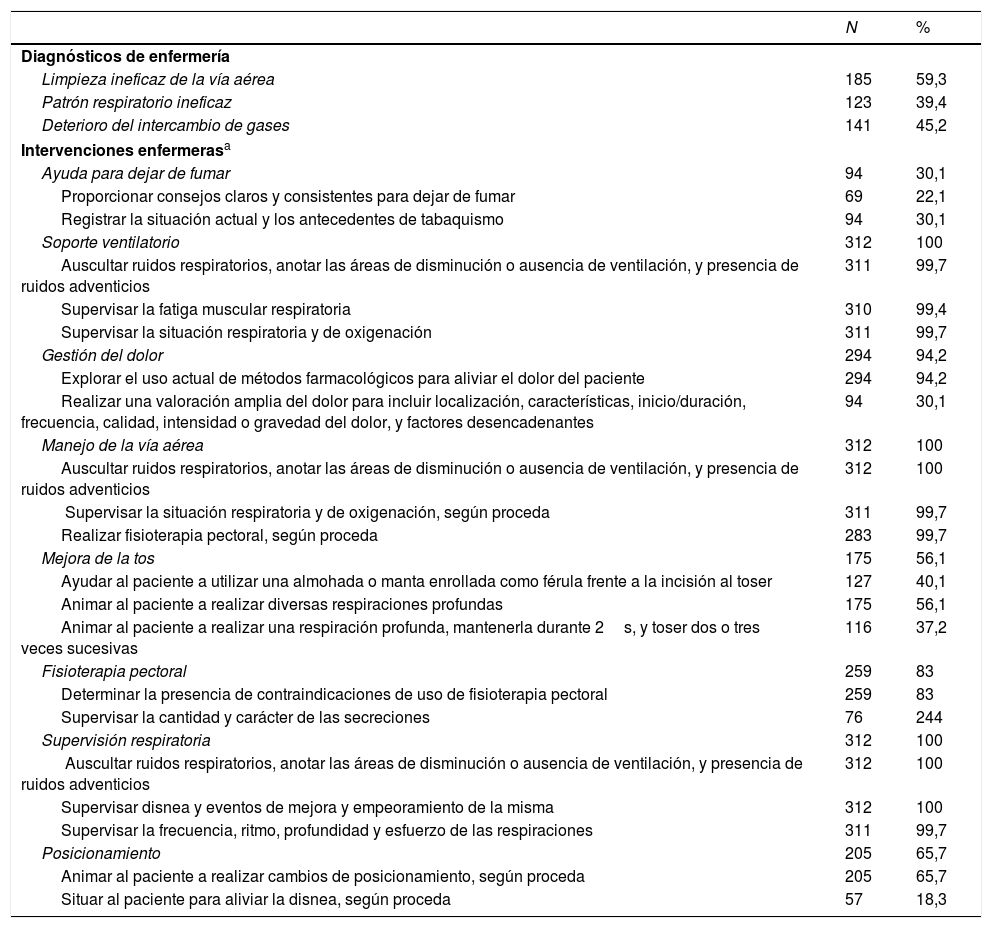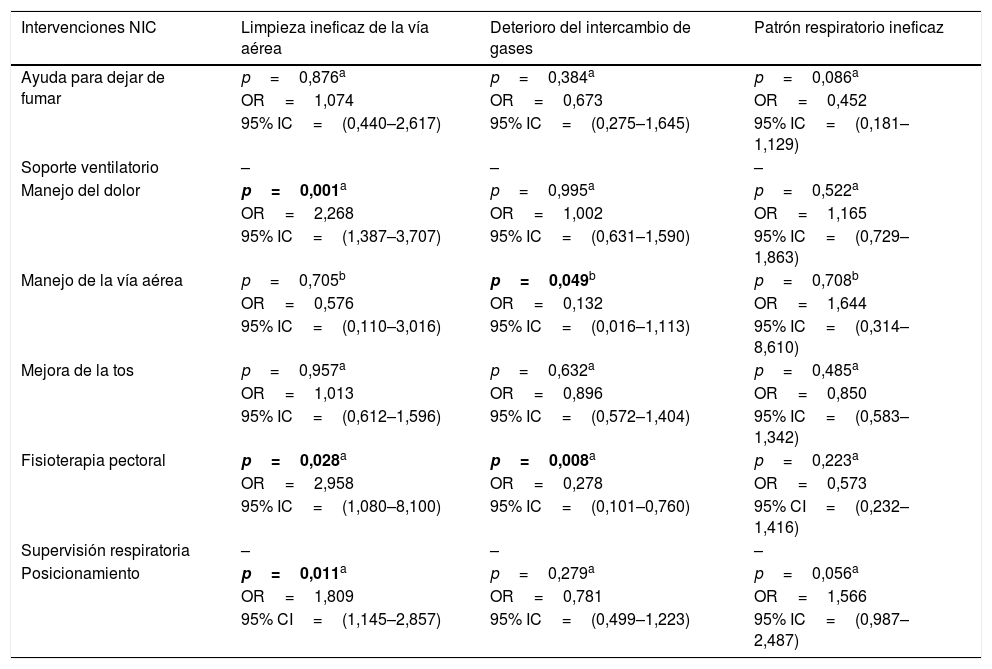Determinar la asociación entre diagnósticos de enfermería respiratorios e intervenciones de enfermería en pacientes sometidos a cirugía toráícica o abdominal superior.
MétodoEstudio cuantitativo y transversal. Los participantes fueron 312 pacientes dentro de las primeras 48 horas después de cirugía torácica o del abdomen superior. Los pacientes fueron examinados por el equipo de investigación utilizando un instrumento con variables relacionadas con la función respiratoria. El equipo de investigación estableció la presencia de tres diagnósticos de enfermería e intervenciones usando la clasificación NANDA-I y la Clasificación de Intervenciones de Enfermería. Las correlaciones se analizaron con la prueba de chi-cuadrado o de Fisher.
ResultadosDel total de 312 evaluaciones, la limpieza ineficaz de las vías aéreas estuvo presente en 185 evaluaciones (59,3%), patrón respiratorio ineficaz en 123 (39,4%) y deterioro del intercambio gaseoso en 141 (45,4). Los pacientes con limpieza ineficaz de las vías aéreas tenían más probabilidades de requerir manejo del dolor (OR: 2,27), fisioterapia torácica (OR: 2,96) y posicionamiento (OR: 1,8), mientras que los pacientes con deterioro del intercambio gaseoso tenían menos probabilidades de necesitar de manejo de las vías aéreas (OR: 0,13) y fisioterapia (OR: 0,28).
ConclusionesAquellos pacientes con el diagnóstico de enfermería de limpieza ineficaz de las vias aéreas presentaron asociación con las intervenciones manejo del dolor, fisioterapia y posicionamiento, mientras el diagnóstico deterioro del intercambio gaseoso estuvo asociado con la intervención manejo de las vías aéreas y fisioterapia. Los resultados proporcionan una base para que las enfermeras desarrollen planes de atención efectivos y minimicen las complicaciones respiratorias postoperatorias.
To determine associations between respiratory nursing diagnoses and nursing interventions in patients submitted to thoracic or upper abdominal surgery.
MethodCross sectional quantitative study. Participants were 312 adult patients within the first 48 hours after thoracic or upper abdominal surgery. Patients were examined by the research team using an instrument with variables related to the respiratory function. The research team established the presence/absence of three nursing diagnoses and proposed interventions using the NANDA-I classification and the Nursing Interventions Classification. Correlations were tested using the chi-square or Fisher's test.
ResultsFrom the total 312 examinations, ineffective airway clearance was present in 185 (59.3%) assessments, ineffective breathing pattern in 123 (39.4%), and impaired gas exchange in 141 (45.4%). Significant correlations showed that patients with ineffective airway clearance were more likely to require pain management (or: 2.27), chest physiotherapy (or: 2.96), and positioning (or:1.8), while patients with impaired gas exchange were less likely to require airway management (or: 0.13) and chest physiotherapy (or: 0.28).
ConclusionsPatients with ineffective airway clearance had more chances of requiring pain management, chest physiotherapy, and positioning, while the nursing diagnosis impaired gas exchange was related with airway management and chest physiotherapy. The findings provide basis for nurses to develop effective care plans and to minimize postoperative respiratory complications.








